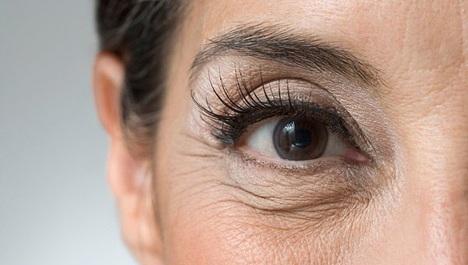Collagen – The Guardian of Youth
Delaying aging is not just a dream anymore, collagen can help us extending our youth. By supporting regeneration processes in our body, collagen is the secret ingredient of staying young and healthy. You don’t have to do anything else than finding a collagen supplement.
Replenishing collagen is an unmissable opportunity to slow down ageing. Our body has the fascinating skill of healing itself. This healing largely depends on the metabolism. Protein synthesis plays an essential role in metabolism, but collagen is required as a catalyst.
Natural building block
Collagen is a natural protein that supports the body’s primary tissue, the connective tissue. Collagen ensures elasticity of the organs and tissues. 75% of the skin is built up by collagen and 30% of the proteins making up our body consist of collagen. It is present in every multicellular organism.
Besides supporting the current structure of the body, collagen plays an essential role in growth and development of connective tissues. It is present in the skin, hair, nail, ligaments, tendons, cartilages, bones and all other connective tissues. Built up by white fibres that form a matrix structure, creating that well-known jelly-like consistency. For example, this gelatinous protein can be found in the eyes – providing its shape.
Types of collagen
There are a number of different types of collagen in our bodies. These work differently and have their separate roles:
Type I – skin, tendon, ligaments and bones
Type II – Cartilage, vitreous body (the jelly-like tissue filling the eyeball behind the lens)
Type III – skin, muscle, blood vessels
Type IV – kidney and other internal organs
Type V – dermal/epidermal junction, placental tissues
Collagen and sleeping
The importance of a good night’s sleep has been emphasized many times before. During sleeping the body has an active rest and regeneration by producing energy to replace what it used up duringthe day. Important metabolic processes happen during sleeping. Sleeping can be divided to phases which form a cycle. Our body does most of the work during the first phase of sleeping (alpha phase) when it prepares for regeneration. In order to regenerate muscles, joints, organs and the skin, a protein synthesis needs to occur during this first, preparatory phase which requires collagen and nutrients. The body continues working in the second and third phases too. This cycle is repeated over and over again during our sleep.
Collagen absorption
Not all food products with collagen content contain the appropriate amount or quality of collagen to ensure the required level of the body’s collagen supply. Collagen is mainly found in the chewier bits of meat which we usually discard these days, but what our ancestors have consumed. We tend not to eat raw tendon or skin which contain high levels of collagen. During cooking these turn into gelatine, still containing the beneficial amino acids coming from the collagen. With a more intense procedure than cooking we get a slightly different product, the hydrolysed collagen.
Hydrolysed collagen vs gelatine
The two are not exactly the same, although they are very similar. Both consist of the same amino acids, but their chemical properties differ. In order to get the hydrolysed form, collagen needs to go through intensive processing which results in the protein decomposing to smaller particles than in gelatine.
We at Aquacoll only use high-quality beef hydrolysed collagen (PEPTAN®) sourced from France, where technology of the highest standards is used to produce it.
The beneficial impact of collagen largely comes from the amino acids. Our metabolic system turns the gelatine into the same amino acids as the hydrolysed collagen. Both have the same positive impact on our bodies, it does not matter in which form we consume it. However, it appears that hydrolysed collagen is more easily digestible for many people.
Collagen deprivation
Collagen deprivation can lead to feeling weakness and fatigue, as if we had no energy. When the body doesn’t have the sufficient level of collagen, certain symptoms arise.The first signs of collagen deprivation are the appearance of wrinkles and articular pain. As we get older, the body naturally produces less collagen. Collagen deprivation is one of the main reasons of symptoms of ageing showing.
The production of collagen can be reduced by many other factors, e.g. smoking, daily consumption of coffee and alcohol, malnutrition, stress and intensive physical strain. Even pollution and some medicines can have a negative impact on collagen levels. Our lifestyle has a major impact on the pace of this reduction.
Ageing
Our cells born and die throughout our life. However, as we get older, the rate of cell reproduction slows down as less cells are born than die. The body produces less collagen: production starts slowing down after the age of 20. It continues to slow by 1 – 2% each year and gets to very low levels between the age of 30 and 40, and it declinesto about 20% by the age of 60 [1]. When there isn’t enough collagen in the body, resistance to illnesses decreases.
With lower levels of collagen comes the slow process of aging: the hair turns grey, wrinkles appear on the skin, muscles and joints lose their flexibility, bones get weaker, eye and vision problems develop and the body’s ability to resist illnesses decreases. Many ageing-related illnesses can be linked to the low levels of this living protein.
Collagen and the skin
Over 25 the collagen production of the body starts to slow down which soon becomes visible on the skin. As collagen production slows, the skin becomes less able to store water. It becomes saggy and wrinkles and dark spots appear as it becomes less and less hydrated. The colour of the skin changes, red and brown spots appear and birthmarks become even more sensitive than they were at a younger age. Skin deformations, diseases or allergies can appear. Capillaries of the skin expandand prevent the skin fromretaining water and nutrients.
This is a natural process which happens to everyone, but with a healthy lifestyle and food supplements the process can be slowed down. Hence, a collagen supplement is essential!
Symptoms
The following symptoms can suggest collagen deprivation (the list is non-exhaustive):
- Decreased bone strength
- Problems with the backbone
- Dark circles around the eyes
- Brittle nails and slow growth
- Hair loss
- Fatigue
- Problems with digestive system
- Dental problems: toothache and early decay of teeth
- Dry skin, wrinkles and easy bruising
- Muscle ache
- Loss of joint stability can cause stiffness and joint pain
The following illnesses can be associated with collagen deficiency:
Arthritis
Arthritis is a condition causing pain and inflammation in the joints that can appear in many different forms. Osteoarthritis is the condition when the surfaces of joints become damaged, resulting in the cartilage covering the bones becoming thinner and even completely disappear. The bones will rub against each other during movement, which becomes painful. The amino acids present in collagen play a major role in the building of cartilage. Studies suggest that taking collagen supplements can improve the symptoms by triggering the collagen production in the body. Other studies also suggest that collagen might be used as the foreign antigen used for treating autoimmune diseases such as rheumatoid arthritis. This treatment is based on taking the collagen by mouth, which should cause a joint inflammation in the body, leading to tolerance to these antigens and reducing the effects of inflammatory arthritis [2].
Myositis and bursitis
Collagen deprivation may lead to certain types of myositis (muscle tissue inflammation) of skeletal muscles. They become more sensitive to pain and may sustain injuries easily. Studies have shown that patients taking hydrolysed collagen have experienced a significant drop and sometimes complete eradication of pain.
Collagen supplement therapies
Creams
Collagen is widely used in anti-aging creams. Its popularity comes from its ability to increase the firmness and elasticity of the skin. The level of collagen in the skin decreases over time, and anti-aging creams are based on the principle that they increase the collagen levels in the skin. Studies have shown that anti-aging creams cannot reduce wrinkles as they contain large collagen molecules which are too big to penetrate the outer layer of the skin [3].
Derma roller
A derma roller used by beauticians has 0.5mm long needles which only reaches the epidermis, the outer layer of the skin. The epidermis does not contain collagen, which is can be found in the dermis, the layer below the epidermis. These needles don’t reach the dermis, and without a stimulus to the dermis the collagen production will not start.
Derma rollers used by medical professionals have 1 – 2 mm long needles which reach the dermis. During this therapy collagen production is triggered by causing small injuries on the skin by the needles of the derma roller which can have 500-600 tiny needles. This therapy helps skin regeneration, but it does not have an impact on collagen production elsewhere in the body. Joints, ligaments and internal organs remain unaffected.
Injections
Collagen supplements can also be taken in the form of injections. This therapy is very efficient and can have long-lasting results. For example, the effects of collagen dermal fillers last up to 6 months. As the regeneration of tissues is a slow process, good results might require injections in a course of multiple occasions. The interval between the injections depends on the person and will be determined by the medical professional. The treatment might have side-effects such as rashes and swelling on the skin.
References




